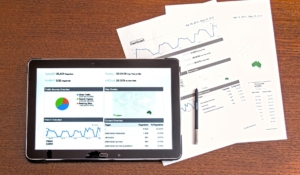It can be hard to stop and really define what is product-led growth or what is a pricing model versus a pricing strategy — this is where analytical frameworks become really important
Oct. 5, 2022
Author: Bryan Belanger
Oct. 5, 2022
Author: Bryan Belanger

We go on and on in the XaaS Pricing blog about how we dislike most SaaS pricing content that’s out there on the web and social media.
We have our unique gripes with each type of content, but if there’s a throughline, it’s that most of the stuff is lazy and one size fits all. Our roots are in market research, so we know that any content worth its salt sits on top of a significant amount of research. The best content is often written by individuals who are learning as they go and sharing their learnings with their readers, but most SaaS pricing content is not like that.
Most SaaS pricing content offers you the “7 best SaaS pricing models” or the “Top 20 pricing hacks to jump-start your SaaS.” These are typically not well researched and just summarize points from other similar articles, regurgitating the sample quotes, data points and examples. They are written to come off as expert truisms.
I suspect most readers of this type of content are left with an empty feeling of: “OK, so what?” or “That doesn’t make any sense for my situation.” There is no way to glean insights from or translate insights into actions you can take to work on your product’s pricing.
These types of articles succeed in creating buzz but fail by creating confusion, which results in inaction.
This is particularly true with concepts like product-led growth, usage-based pricing, and other buzzy topics related to SaaS go-to-market (GTM) approaches and monetization. It can be hard after consuming enough of this type of content to stop and really define what is product-led growth or what is a pricing model versus a pricing strategy.
This is where analytical frameworks become really important.
What’s an analytical framework?
We define an analytical framework as a model for organizing your analysis and/or data on a particular topic. Analytical frameworks consist of hierarchies, which organize thoughts and analysis into different common categories and establish relationships, as well as detailed taxonomy definitions, which impose necessary limiting structure and clarity on the root elements of your analysis. Frameworks are valuable for organizing analysis and for translating analysis into something that is measurable, consistent and repeatable.
You’re probably thinking that sounds more complicated than just reading one of those articles we made fun of. I promise you, it might sound complicated, but it’s really not! It’s probably something you do without even thinking you’re doing it. The most important thing, like with most things, is to just get started, and then to refine and optimize as you go.
Who should use an analytical framework?
Maybe you’re thinking, “This sounds like something for our data science team, not for me,” or, “I’m a busy founder with 1,000 things to do, I don’t have time for that.”
The truth is, however, that using analytical- and framework-driven thinking is for everyone, and should be practiced by everyone. It’s a way of structuring data and analysis to derive more thoughtful and successful outcomes — doesn’t that sound like something everyone should be doing? Many successful entrepreneurs talk about the value of first-principles thinking. The analytical framework approach we’re talking about here is all about applying first-principles approaches to analysis.
The foundation of XaaS Pricing is data, and our data is entirely structured around these types of analytical frameworks.
One area of SaaS pricing that begs for a framework-driven approach to analysis is pricing models. Pricing models are often the topic that the generalist SaaS pricing advice focuses on. Pricing models are really important but not well understood. Much of the current content in SaaS pricing is focused on the industry’s pricing model evolution. There are content and benchmarks out there that say, “The best SaaS companies do usage-based pricing,” but offer little help to actually dissect what that means for your business, unless you’re willing to pay for a costly consulting engagement.
This is where a framework can help you break down the elements of your SaaS pricing model, identify areas you need to focus on, establish systems for quantitative tracking of key elements of your pricing model, and establish a recurring means of analyzing your pricing model.
Let’s use the example of usage-based pricing. Let’s assume you’re from a SaaS company, have read the benchmarks and well-publicized success stories of usage-based pricing companies, and are now evaluating a pricing model change.
One option would be to simply pick one of those case study companies and deploy a model that is somewhat like whatever that company is doing. Where’s a better place to start? You guessed it! Build a framework. Here’s a sample framework we use to analyze pricing models:

As you can see, breaking down the concept pricing models into a bottom-up data framework reveals a number of categories that compose a pricing model, as well as submetrics that can be analyzed within each of those categories as part of a pricing model evaluation or creation project.
By translating the top-level concept of pricing model into these six categories and 15 metrics and applying this framework to analyzing your pricing model against your competitors’ models as well as your customers’ pricing model preferences, you can get a more fine-grained understanding of how your pricing model is working and where there are opportunities for improvements. Using this framework, you can take elements of pricing model strategy that were previously not quantifiable or comparable and analyze them consistently in a repeatable manner.
You would then create similar frameworks for the other elements of your monetization strategy, such as packaging, price levels and discounting. You can analyze all elements of your monetization strategy at a first-principles level, understand each factor at its foundation, and then bring everything back together to create a cohesive strategy.
Here’s an example of how that might look in practice for analyzing usage-based pricing for your business:

If you apply the above framework for usage-based pricing to an analysis of your current business, your competitors and/or proxy peers, and your customers’ preferences, you’ll establish a detailed understanding of how usage influences all aspects of your monetization strategy and that of your competitors, including both packaging and pricing. Once you understand the components, you can make more informed decisions on how to integrate usage into a cohesive and well-connected monetization strategy that considers not only pricing model but also the aspects of monetization and, more broadly, your go-to-market strategy overall.
Ray Rike, founder of RevOps Squared, friend of XaaS Pricing, all around good guy, and expert on all things SaaS metrics, recently announced an event called the SaaS Metrics Palooza. It’s a first-of-its-kind event, completely focused on SaaS metrics. There’s a fantastic array of speakers lined up, covering a diverse range of topics. It’s all happening virtually on Oct. 11–12 and is completely free. Register here to attend.
I was lucky enough to be asked by Ray to do a session on SaaS pricing model benchmarking and evolution in pricing models. I will go into much greater detail about the SaaS Pricing analysis framework ideas in the session, and deep dive on trends we’re seeing in SaaS pricing models by applying those frameworks in our research.
Why is an event like this so important? Why do SaaS metrics matter so much?
Data powers most of our behaviors and decisions today. This is particularly true in SaaS. SaaS companies collect data on nearly every single action their customer takes, from initial website clicks as a prospect to detailed usage patterns on paying customers. But, like with our examples of SaaS pricing models, there is often no basis of shared understanding of the different types of data and metrics that are collected and calculated to analyze the performance of SaaS businesses. This inconsistency creates compounding problems when it comes time to compare the performance of different businesses or valuate businesses for sale. It also creates complexities in communicating the performance and value of a business, whether internally, to customers, shareholders and/or the market broadly.
The above is really important, but there’s an even bigger driver at play. In a world where the average human attention span is now less than that of a goldfish, it can be tempting to avoid detailed, data-driven analysis and instead search for “hacks.” But all too often, this is a road to sameness.
Data-driven, thoughtful, detailed analysis can help you uncover the truths that very few people agree with you on, to paraphrase entrepreneur Peter Thiel. Discovering those truths and exploiting them into action are where differentiation is born, whether in your SaaS pricing strategy specifically, as we often prattle on about, or in anything else related to your business or your life. In our point of view, the only way to consistently and reliably conduct the type of detailed analysis that translates into sustainable customer value and competitive differentiation is by taking the time to craft repeatable, detailed analytical frameworks.
Want to talk SaaS analysis frameworks, or have a question about how these concepts apply to your current pricing challenge? You can find me on Twitter at @bbelangerTBR or send your feedback directly to [email protected]. I read all replies. And be sure to subscribe to get our content sent to your inbox once it publishes. Thanks for following along!
 ©2022 XaaS Pricing. All rights reserved. Terms of Service | Website Maintained by Tidal Media Group
©2022 XaaS Pricing. All rights reserved. Terms of Service | Website Maintained by Tidal Media Group

 Bessemer Venture Partners recently released its 2022 report Software powering...
Bessemer Venture Partners recently released its 2022 report Software powering...